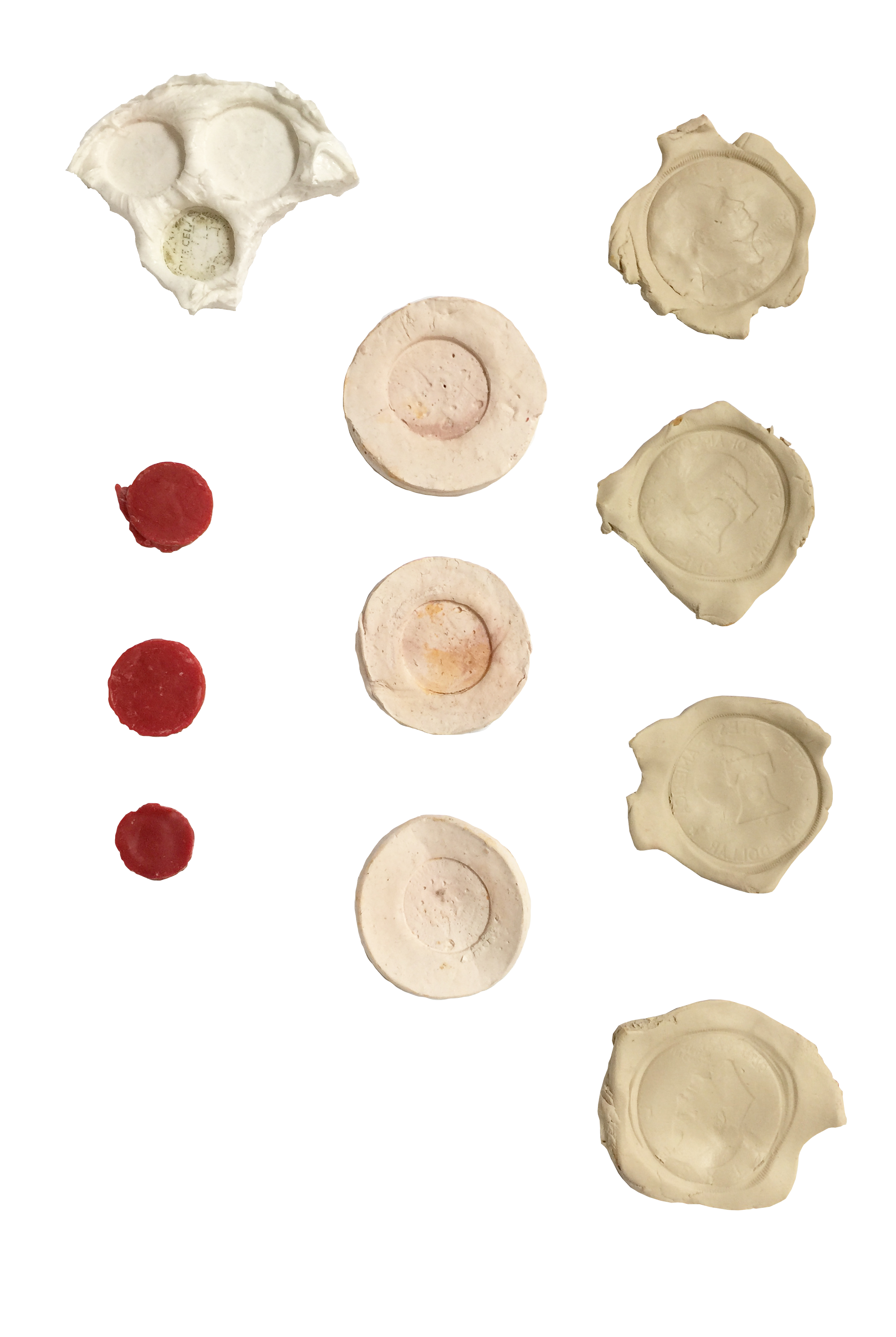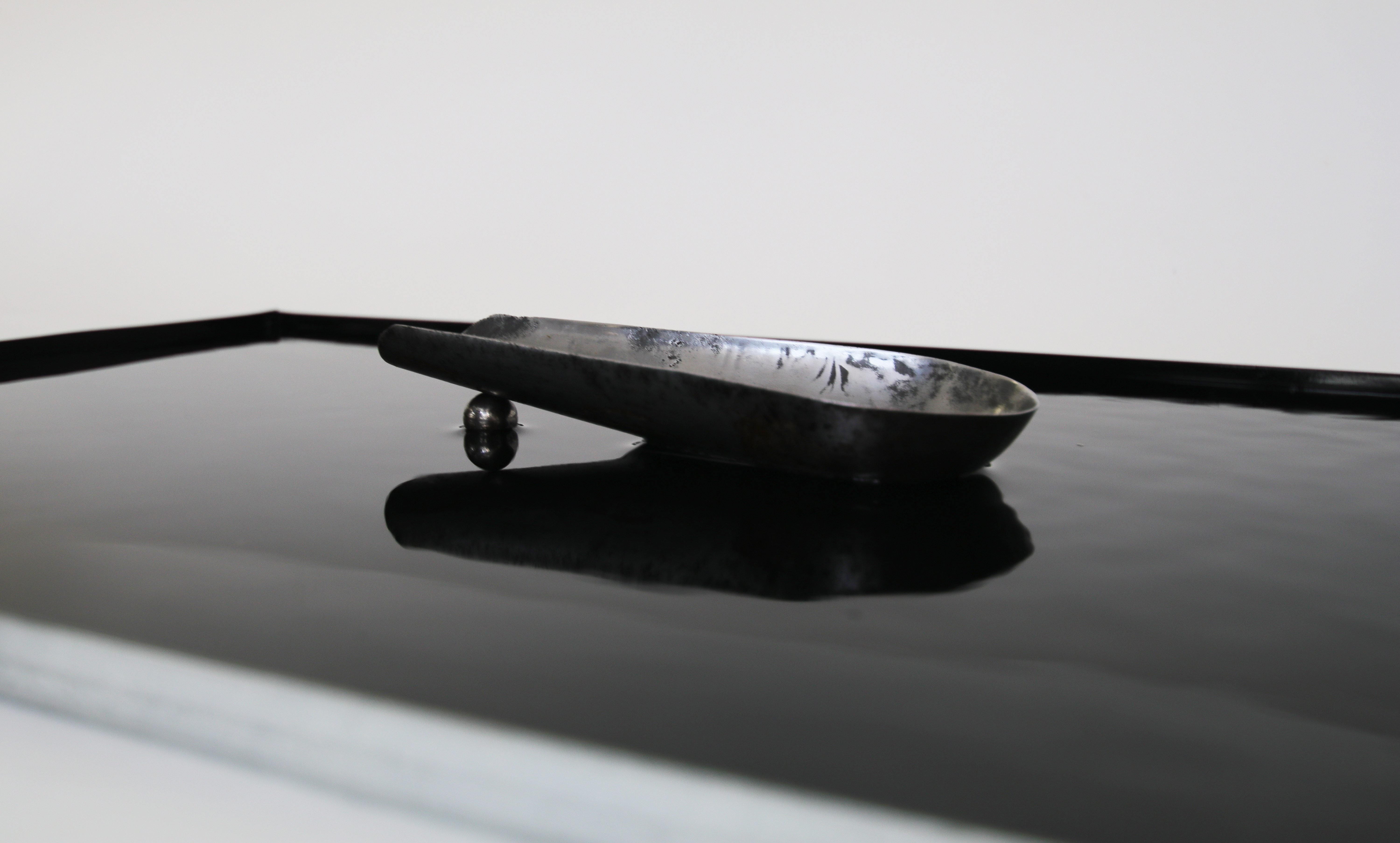







Mute
Ieva Lygnugarytė and Elizabeth Hersch
Mixed media series
In ancient time the Humans and animals always settled by the water. After visiting this community, it stuck me that it was built according to ancient ideals of living. The watering hole in the Center. We are trying to explore what really is at the center of this place. Is the beauty coming from physical structure, the people that live there, or the geography its built upon?
A photograph could become a piece of evidence or a vague representation of a period of time. Photographs themselves become the proof of a moment (or create one), whereas a relic is a proof of the continuous histories that lasted for generations. However, the persona that is captured in the photographed, if not disguised, does not evoke a comparative identity of oneself, which is the opposite efect of the refection. The mirror, same as water refection only functions when looked at, which awakens ones alter-ego. Regarding to the ancient Himalayan legend, the mirror refection was discovered when a little brook saw another woman resting near the pond, which she found out, was herself. Isolated Biami tribe people of Papua New Guinea in the 1970s found the refection in the mirror terrifying. A refection is a phenomenon that is refecting the outer world and brings the one who looks at it, to another layer of reality. Why people tend to place refective water ponds near the living communities? Does it work as a photograph or an observer of a spectacle? A water refection in Meudon-la-Forêt documents the events that happen in the subconsciousness of the community of. It is a hushed humble monument refecting the life of the community and the landscape of the mundane buildings that the people leave their traces in.
Farcical pillow
We put items such as crown jewels and precious metals on display. What is underneath? The iconic velvet pillow. The pillow is fashioned in colors that were historically known to be exclusive to those people who could pay the heavy price to produce them, purple being the most expensive color of all. Royal gems and jewels are placed on velvet pillows dyed various shades of this hue. The concrete pillow pokes fun at the very image, value and functions of the traditional purple velvet pillow, revealing it for the sham it is.
Concrete.
Monument to the secondary
Monument to the Secondary is a sculpture dedicated to humanity’s emotional ties to objects. We decided to take a closer look at the objects which may be sought out not for their primary function, but for their more profound and symbolic meaning, to look at Meudon-la-Foret as a receptacle of histories, an empty shell to be flled in by the inhabitants with content and meaning. Objects becomes the receptacle of talismanic properties, with stories applied, attached to them from past owners and memories. Objects are not longer only reduced to perform their original function, but are relics, which have their own life, independant from the one of their temporary owners. Mirrors were discovered thousands of years ago, frst made from black vulcanic glass obsidian, later from precious metals such as copper or bronze and then polished until they began refecting. This tradition of making mirrors spreaded all the way from South America to Asia leaving people enchanted by the idea of creating artifcial refection. Mirrors instantly became objects of interest, which resembled water refection, which was a symbol of self-admiration. Throughout history mirrors were exceptionally prestigious, only found within wealthy families. However, even in underprivileged communities, humanity’s inner drive seek ways to create and invent. Where individuality is veiled or restrained, small details begin to emerge, betraying the subtle traces that humans have left after occupying a place. This idea led me to create a sculpture composed of a mirror-polished old grain scoop on a pedestal to evoke the creative force of underprivileged communities and the relevance and importance of emotional attachment to things that lost their functionality.
Alluminium box, metal playing balls, grain scoop, water.
Agent
Currency was initially created as a more accurate way to track commerce as opposed to bartering. It has evolved to become a symbol of many things: a time period, government, power, stature. It often costs more to produce than the currency is actually worth. Might this be an analogy for the value we put on money? Have we made money more of an importance in our society than it deserves and can we reverse this ideology?
Molds of U.S. Currency: wax, alginate, clay, silicone.
2018, Meudon-la-Forêt
Ieva Lygnugarytė and Elizabeth Hersch
Mixed media series
In ancient time the Humans and animals always settled by the water. After visiting this community, it stuck me that it was built according to ancient ideals of living. The watering hole in the Center. We are trying to explore what really is at the center of this place. Is the beauty coming from physical structure, the people that live there, or the geography its built upon?
A photograph could become a piece of evidence or a vague representation of a period of time. Photographs themselves become the proof of a moment (or create one), whereas a relic is a proof of the continuous histories that lasted for generations. However, the persona that is captured in the photographed, if not disguised, does not evoke a comparative identity of oneself, which is the opposite efect of the refection. The mirror, same as water refection only functions when looked at, which awakens ones alter-ego. Regarding to the ancient Himalayan legend, the mirror refection was discovered when a little brook saw another woman resting near the pond, which she found out, was herself. Isolated Biami tribe people of Papua New Guinea in the 1970s found the refection in the mirror terrifying. A refection is a phenomenon that is refecting the outer world and brings the one who looks at it, to another layer of reality. Why people tend to place refective water ponds near the living communities? Does it work as a photograph or an observer of a spectacle? A water refection in Meudon-la-Forêt documents the events that happen in the subconsciousness of the community of. It is a hushed humble monument refecting the life of the community and the landscape of the mundane buildings that the people leave their traces in.
Farcical pillow
We put items such as crown jewels and precious metals on display. What is underneath? The iconic velvet pillow. The pillow is fashioned in colors that were historically known to be exclusive to those people who could pay the heavy price to produce them, purple being the most expensive color of all. Royal gems and jewels are placed on velvet pillows dyed various shades of this hue. The concrete pillow pokes fun at the very image, value and functions of the traditional purple velvet pillow, revealing it for the sham it is.
Concrete.
Monument to the secondary
Monument to the Secondary is a sculpture dedicated to humanity’s emotional ties to objects. We decided to take a closer look at the objects which may be sought out not for their primary function, but for their more profound and symbolic meaning, to look at Meudon-la-Foret as a receptacle of histories, an empty shell to be flled in by the inhabitants with content and meaning. Objects becomes the receptacle of talismanic properties, with stories applied, attached to them from past owners and memories. Objects are not longer only reduced to perform their original function, but are relics, which have their own life, independant from the one of their temporary owners. Mirrors were discovered thousands of years ago, frst made from black vulcanic glass obsidian, later from precious metals such as copper or bronze and then polished until they began refecting. This tradition of making mirrors spreaded all the way from South America to Asia leaving people enchanted by the idea of creating artifcial refection. Mirrors instantly became objects of interest, which resembled water refection, which was a symbol of self-admiration. Throughout history mirrors were exceptionally prestigious, only found within wealthy families. However, even in underprivileged communities, humanity’s inner drive seek ways to create and invent. Where individuality is veiled or restrained, small details begin to emerge, betraying the subtle traces that humans have left after occupying a place. This idea led me to create a sculpture composed of a mirror-polished old grain scoop on a pedestal to evoke the creative force of underprivileged communities and the relevance and importance of emotional attachment to things that lost their functionality.
Alluminium box, metal playing balls, grain scoop, water.
Agent
Currency was initially created as a more accurate way to track commerce as opposed to bartering. It has evolved to become a symbol of many things: a time period, government, power, stature. It often costs more to produce than the currency is actually worth. Might this be an analogy for the value we put on money? Have we made money more of an importance in our society than it deserves and can we reverse this ideology?
Molds of U.S. Currency: wax, alginate, clay, silicone.
2018, Meudon-la-Forêt

